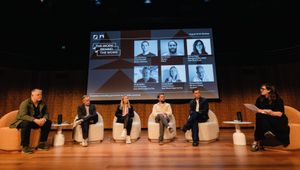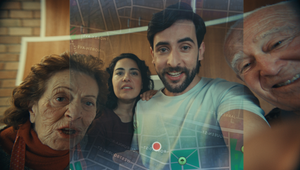
What's Next For FINCH and Supermassive's Titanium Shortlisted ‘36 Months’ Campaign

While 36 Months’ shortlisting for The Dan Wieden Titanium Lions prize at Cannes Lion 2025 was “quite momentous,” Greg Attwells, director at 36 Months told LBB “we never got into this to win awards.”
“This wasn't an award play, this was a couple of concerned dads just wondering if we could go up against big tech in a positive way, and give our kids a bit more time for their healthy development. We didn't even know if we could accomplish legislation change, but we thought we'd have a swing at the fence.
“We built a movement on hope, not fear,” he said.
Launched in May 2024, 36 Months is a social change initiative that resulted in legislation to raise the minimum age Australian teenagers can sign up for social media accounts.
Pioneered by Nova radio presenter Michael ‘Wippa’ Wipfli, and Rob Galluzzo, founder of production company FINCH, the initiative wants to see the age raised from 13 to 16, giving kids 36 months of childhood back.
As well as being shortlisted for the Titanium, FINCH and Supermassive picked up a Silver Lion for PR Effectiveness.
Despite the momentum the campaign has gained in Australia, Greg said “the job isn’t done.”
“Our mission at 36 Months is rebuilding the ecosystem around adolescence. We’re asking now, well, where are the other points of failure in that system around those ages, and what can we do or build next to strengthen them? It wasn't a flash in the pan campaign, one and done. We're very busy now and on to what's next.”
The team are now setting their sights overseas, knowing that “once Australia weighed in on this legislation change, it was inevitable that other countries would follow suit,” Greg said.
“We toyed with the idea of expanding this policy change campaign into other markets ourselves. In the UK, Japan, New Zealand, and the EU there were signals, parliamentary readiness and media momentum that felt like that was ripe or ready to go.”
Instead when it came to expansion, Greg pointed to the importance of “grassroots momentum” when it comes to “our blueprint for systemic change.”
“36 Months wasn't just run from here by a few people, this was owned by parents across the country,” he said.
“We shifted our philosophy or our approach to mentoring and advising and consulting with groups on the ground in those markets who wanted to run a similar kind of policy change campaign. Basically, we were an open book around what we did and what we felt like worked. We codified it, and we let them in on the playbook.”
Back in Australia, the work that 36 Months is doing will continue on through work with schools throughout the country.
“One of the things that became clear to us last year as we started to lean into this idea of healthy teen development is that whatever's going on for a young person is going to manifest itself at school,” Greg said.
“It's where their primary friendship groups are. It's where they spend the most amount of time during those critical three years between 13 and 16.”
Whilst a school's duty of care used to be between 8am and 3pm while kids were on site, Greg said “social media has blown this up” in the modern world, making “student wellbeing a 24/7 challenge for school leaders”
“Parents are expecting more accountability, more action and more transparency, and so because we're a parent-driven movement, we've become one of the most trusted and engaged parent communities in Australia. We thought that was a really great next step -- building on the success of social media reform -- to actually give the government a tool to measure the impact of this new legislation, particularly how it plays out in that school ecosystem.
“We're building a student wellbeing utility, at the moment we're designing it with New South Wales principals. The goal is to give school leaders really clear, actionable data to support students and reduce reactive firefighting around wellbeing incidents that happened at school.”
At the moment, the student wellbeing utility includes incident reporting functionality, intelligent risk monitoring, student centered action plans for managing incidents, pattern recognition across schools and regions.
“What makes this a bit different from other stuff that's out there is it builds a system wide picture of wellbeing, and it brings parents and educators and students together in tackling wellbeing as a community,” Greg added.















